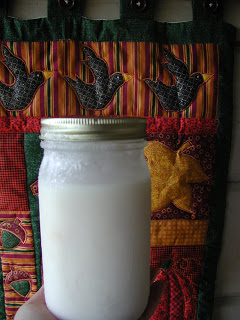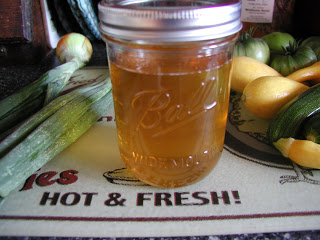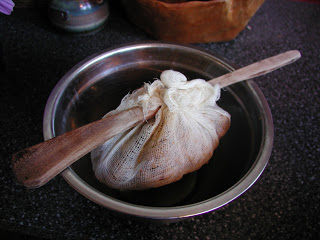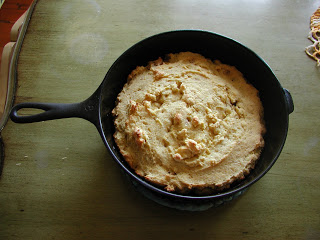When you are a mother of of two kids with dairy sensitivities, and you love to bake, the options start looking slim. I tried Earth Balance margarine for a long time, but I didn’t feel good about all those processed vegetable oils. I tried organic shortening, same story. I finally threw up my hands and started using butter again, because I wanted them to have some real, un-processed fats. They do fine with the butter, but good, organic butter is expensive, and sometimes you need something more shortening-like. I was reading Little House in the Big Woods by Laura Ingalls Wilder one day, and a light bulb went off in my head when I got to the hog butchering passage. We had ordered a half hog from Sweetbriar Farm that would be done at the butcher in a few weeks. Lard was the answer. Now, I am well aware of all the stigma around lard and animal fats. There was a time I would not have touched lard with a ten foot pole, but the more I educated myself about it, the more I felt like lard, was indeed, the answer. Not the only answer, mind you, there are still plenty of uses for butter and olive oil on a regular basis in my kitchen, but lard also has its own important place in the scheme of things.
In her cookbook, Nourishing Traditions, based on the nutritional research of Dr. Weston Price, Sally Fallon writes on fats in the diet, “Fats from animal and vegetable sources provide a concentrated source of energy in the diet; they also provide the building blocks for cell membranes and a variety of hormones and hormone-like substances. Fats as part of a meal slow down nutrient absorption so that we can go longer without feeling hungry. In addition, they act as carriers for important fat-soluble vitamins A, D, E and K. Dietary fats are needed for the conversion of carotene to vitamin A, for mineral absorption and for a host of other processes.” “Our choice of fats and oils is of extreme importance. Most people, especially infants and growing children, benefit from more fat in the diet rather than less. But the fats we eat must be chosen with care. Avoid all processed foods containing new-fangled hydrogenated fats and polyunsaturated oils. Instead, use traditional vegetable oils like extra virgin olive oil and small amounts of unrefined flax seed oil. Acquaint yourself with the merits of coconut oil for baking and with animal fats for occasional frying. Eat egg yolks and other animal fats with the proteins to which they were attached. And, finally, use as much good quality butter as you like, with the happy assurance that it is wholesome-indeed, an essential-food for you and your whole family.”
On lard, specifically, she writes: “Lard or pork fat is 40 percent saturated, 48 percent monounsaturated (including moderate amounts of antimicrobial palmitoleic acid), and 12 percent polyunsaturated. Like the fat of birds, the amount of Omega-6 and Omega-3 fatty acids in lard will vary according to the diet of the pigs. ..Like duck and goose fat, lard is stable and preferred fat for frying. It was widely used in America at the turn of the century. It is an excellent source of vitamin D, especially in third-world countries where other animal foods are likely to be expensive.
What about the risk of heart disease, you might also ask? Fallon writes on this topic, “Before 1920 coronary heart disease was rare in America; so rare that when a young internist named Paul Dudley White introduces the German electrocardiograph to his colleagues at Harvard University, they advised him to concentrate on a more profitable branch of medicine. The new machine revealed the presence of arterial blockages, thus permitting early diagnosis of coronary heart disease. But in those days clogged arteries were a medical rarity, and White had to search for patients who could benefit from his new technology. During the next forty years, however, the incidence of coronary heart disease rose dramatically, so much so that by the mid-1950’s heart disease was the leading cause of death among Americans. Today heart disease causes at least 40 percent of all US deaths. If, as we have been told, heart disease is caused by consumption of saturated fats, one would expect to find a corresponding increase in animal fat in the American diet. Actually, the reverse is true. During the sixty-year period from 1910-1970, the proportion of traditional animal fat in the American diet declined from 83 percent to 62 percent, and butter consumption plummeted from 18 pounds per person per year to four. During the past eighty years, dietary cholesterol intake has increased only 1 percent. During the same period the percentage of dietary vegetable oils in the form of margarine, shortening, and refined oils increased about 400 percent while the consumption of sugar and processed foods increased about 60 percent.”
So, when would you use lard? My answer is occasionally and for frying and some baking. We all know about lard pie crusts, I’m sure. They really are amazing. I find that for frying up potatoes, lard keeps things from sticking to the cast-iron skillet unlike anything else. Of course, greens are delicious sauteed in a little bit of lard or bacon grease. This may all sound like a really gross idea to some of you still, but when you think about going for the Omega-3 fatty acids, and the vitamins, especially vitamin D in the winter when you need it the most here in Oregon, it seems like a better and better idea. When you’re living on a tight budget, and you can’t get as much good-quality, organic meat in your diet as you would like for your kids, a little lard here and there can be a good thing. All else aside, it’s SO much better for you than margarine or shortening.
Here is the lard hot and fresh, after the solids, aka. cracklings, have been strained out. It’s usually an amber color until it cools, and then it turns creamy white.
I strain the cracklings through a cheese cloth and let it drip tied onto a wooden spoon.
What, you might wonder, does one do with cracklings? You make crackling cornbread. Just freeze the cracklings you won’t use right away, and throw a little handful in your cornbread batter for seasoning.
If lard is sounding like something you want to try making, it’s very easy. Just find a local farmer who raises pigs naturally and organically on pasture, and ask to buy a few pounds of fat. I hear kidney fat is the ideal choice. Then cube it, put it in a pot, and cook it on low heat all day long. It will melt slowly until it is mostly liquid with some crispy cracklings floating on top. At this point, you strain the cracklings through cheese cloth and pour it into jars to cool. Then you can freeze whatever you don’t plan on using within the next few weeks. Just keep the jar you’re using in the fridge. And just throw that Crisco away!




I LOVE lard! And it makes me so happy to see people spreading the message of why animal fats are good for you!! Yay!
I'd much rather use lard than hydrogenated shortening on the few occasions I actually need such a thing. Animal fat is not evil. NO "real" food is evil. It's how much and how often that's key, taking into account that, unless you're trying to carve a living out of the virgin prairie, you don't need as many calories as Laura and her family did. 🙂
OMG!!! I LOVE crackling bread!!!!! Yum-ummmmmmmmm-yyyy!! 😀
I've never considered using lard before reading this, and now I'm on a mission! I'm about to call our local butcher. Do you have a recommendation for a number of pounds of fat to get?
I usually get a 3 LB. bag at the butcher, but I think I did 5 or 6 Lbs. one year, and it didn't really take any longer for it all to melt down. Since it takes most of the day to melt on low heat, it's good to do enough to freeze some so you can wait a while to do it again. Happy lard rendering!
Oh it's so good to hear such talk! 😀 I was a vegetarian for 10 years and then became carnivorous again while pregnant. My dad brought me over some deer stew and I couldn't resist. The deer was from his property.
A friend gave me some lard a few months ago for soap making. I should pull it out of the freezer and follow your directions, as I probably won't be making soap any time soon.
I save grease from everything, lol. It's really good in homemade tamales. I actually added a bit to my homemeade tortillas the other day as well, lol. I also save the leftovers from chicken cooking as well. It's great for good broth and to mix with other stew sort of stuff!
That WAP info is awesome. I have the Nourishing Traditions Cookbook by Sally Fallon. She talks about how the guy who invented the electrocardiograph was laughed at because at the time there was such a low number of people with arteriosclerosis. This was back before the super widespread use of processed oils came about.
We're all about the natural animal fats in our house. Butter, lard, thick broths…they're all so GOOD for you. I'm glad to hear other folks are into this too. I worried lard might be a little bit of a controversial topic 🙂
Yeah I've been always worried to bring it up.
I wanted to share something interesting with you. Before I started eating more meat and animal fats, I developed a really bad case of adult acne.
When I started eating good animal products from a local farmer (Creswick Farms) the acne went away! I don't know as much as I should about this kind of thing, but honestly feel that there is a relation.
http://www.westonaprice.org/health-issues/2023-skin-deep.html
It's funny because all of the so called "health" articles say to avoid this when dealing with such a thing.
I did start drinking raw milk and consuming grass fed raw cheese at the same time, which could be a contributing factor as well.
This is really good to hear that this helped you so much, Su. I know meat and dairy can be really controversial topics nowadays, but I really believe that grass-fed meat, animal fats, and raw dairy are good for people. The Weston Price view of nutrition has really been an affirming discovery for me. I'll bet that both the local meats and the raw dairy combined would do wonderful, nourishing things for the skin. I'm going to remember that, because I'll have two adolescents in a few years!